Making the Move to New Writing Course Outcomes Using the Excelsior OWL
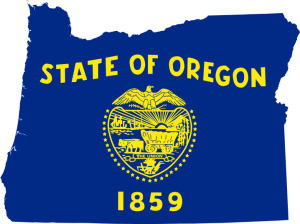
By Casey Reid
Starting this fall, many colleges and universities across Oregon are beginning the transition to new first-year writing course descriptions and outcomes that better align with the 2014 Council of Writing Program Administrators “WPA Outcomes Statement for First-Year Composition.” This shift is part of a larger turn [in composition] toward helping students develop transferable literacy habits and strategies, which includes recognizing the situated, recursive nature of reading, researching, and writing across a variety of contexts. With this turn has come more emphasis on rhetorical awareness, reading processes, information literacy, genre, and multi-modal projects.
The Excelsior University Online Writing Lab (OWL) is helping like mine make this move with its unique instructor resources and its newest student resources, including the Online Reading Comprehension Lab (ORC) (described here) and the Online Writing & Presentations area.
- Faculty can use the Excelsior OWL Owlet to create a free, customized OWL packed with resources and activities related to new course outcomes. This feature is especially great in states like Oregon that have been supporting the development and use of Open Educational Resources (OERs) in an attempt to provide students with quality resources that reduce the cost of attending college.
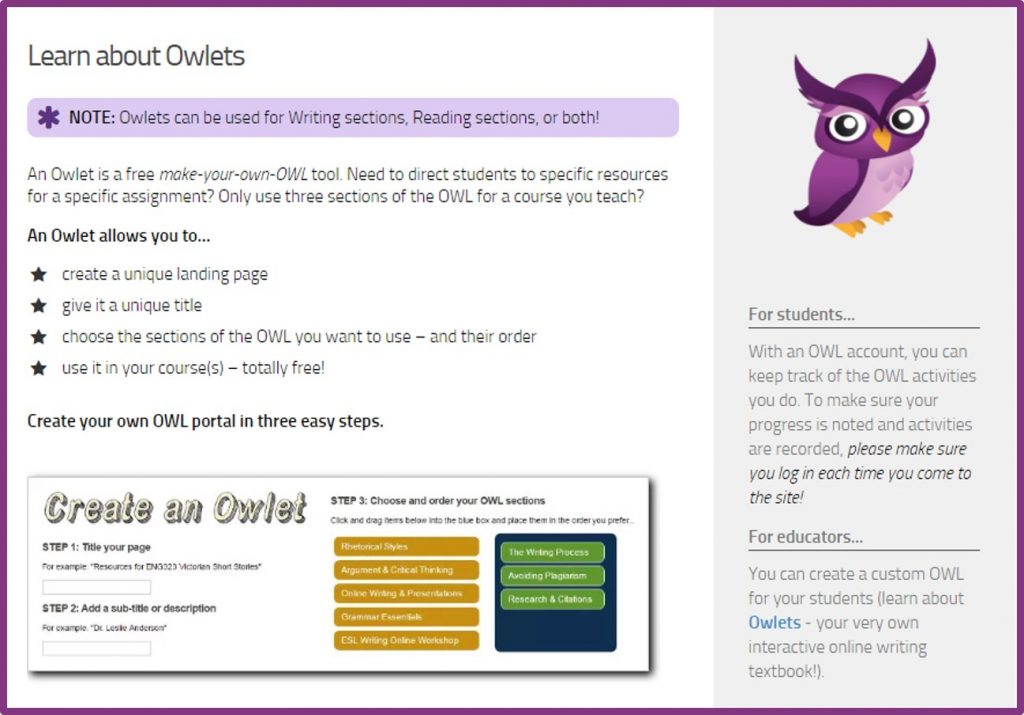
- Writing centers needing to train tutors and create new resources to support the new outcomes can link to the Excelsior OWL to jump-start the process. In the writing center I coordinate, for instance, we are using Pinterest to create student, tutor, and faculty resource collections (like our “Reading Strategies” board) related to the new outcomes and incorporating links to the Excelsior OWL, as with this pin for the ORC.
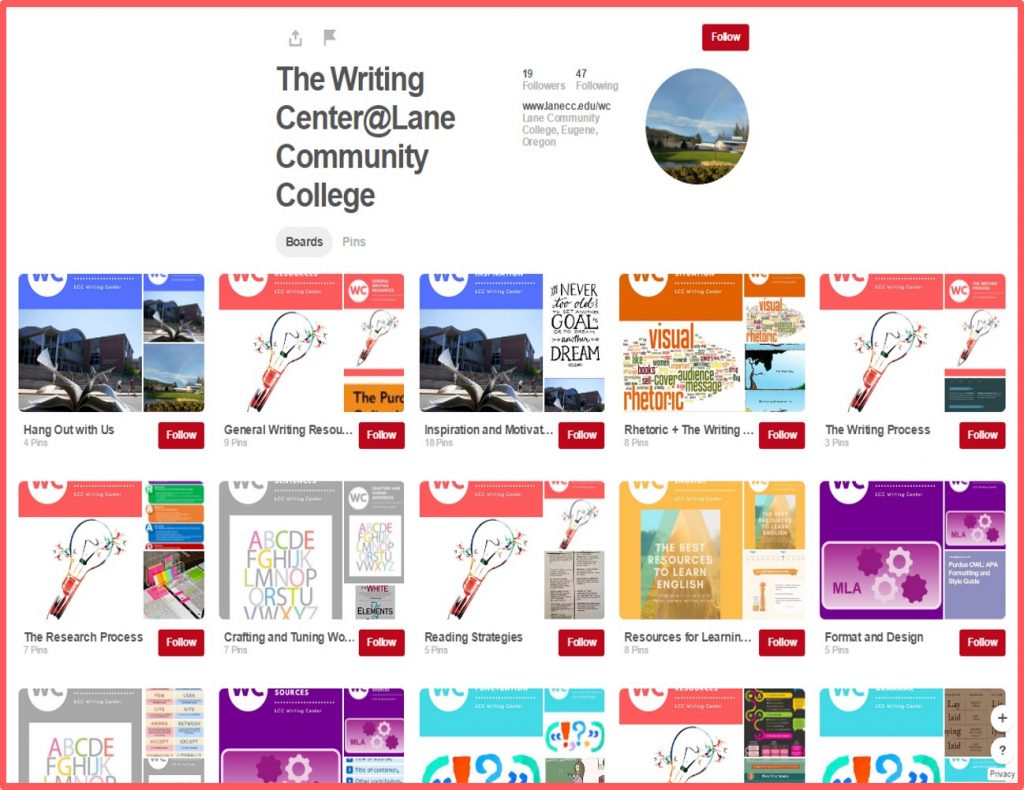
- To support faculty development initiatives for new outcomes, writing departments and programs can embed Excelsior OWL activities onto their websites.
For institutions requiring multi-modal projects as part of their revamped courses, like Oregon’s new Writing 122 class, the best part of the Excelsior OWL is the way it references commonly taught rhetorical concepts (such as the “Modes of Persuasion”) and enacts key principles of multi-modality by incorporating auditory, linguistic, and visual features throughout its resources and activities. It also contains multiple resources specific to multi-modal projects:
- The “Multi-Modal Writing” section of Excelsior’s Online Writing & Presentations area provides strategies [and tips] for creating web pages, photo essays, video essays, and e-portfolios.
- For classes focused on argumentation, the “Argument & Digital Writing” acts as a good introductory resource that incorporates a student-created example of a Prezi-based argument. These student samples are what my students and writing center users report as their favorite feature of the site.
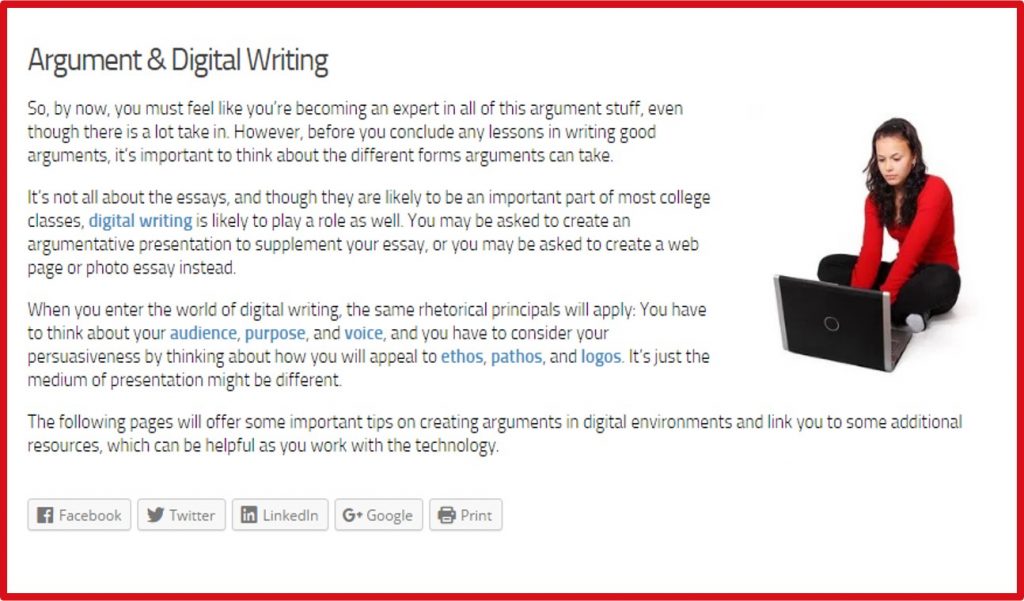
- The “Argument in Photo Essays” section presents a different approach to creating the kind of visually-oriented arguments students may be required to analyze or create as part of a class focused on multi-modality.
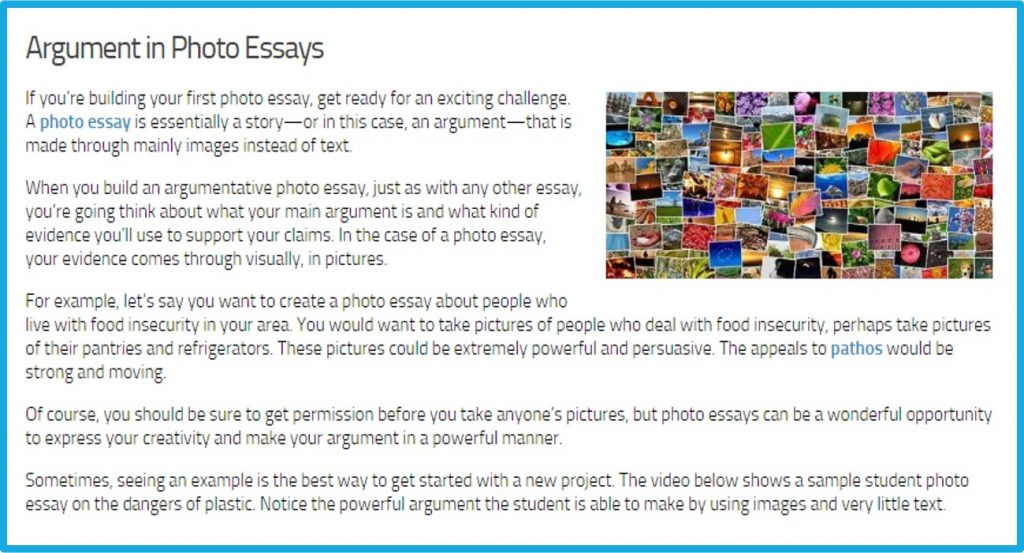
For institutions embracing new directions in their writing courses, the Excelsior OWL is proving to be a key resource with an ever-expanding collection of relevant materials for students, faculty, writing centers, and the writing programs that serve them.
Casey Reid is the Writing Center Coordinator at Lane Community College and serves on the OWL Advisory Board. She is working on her PhD in English at Old Dominion University, specializing in Rhetoric and English Studies Pedagogy.
